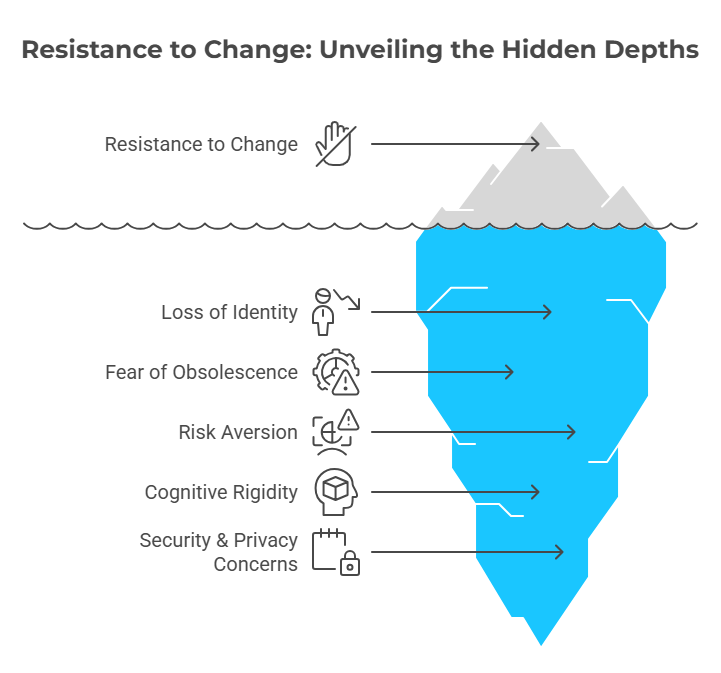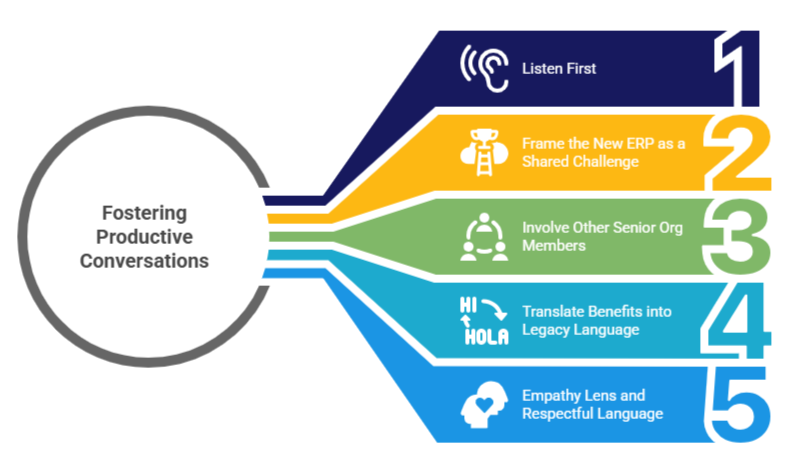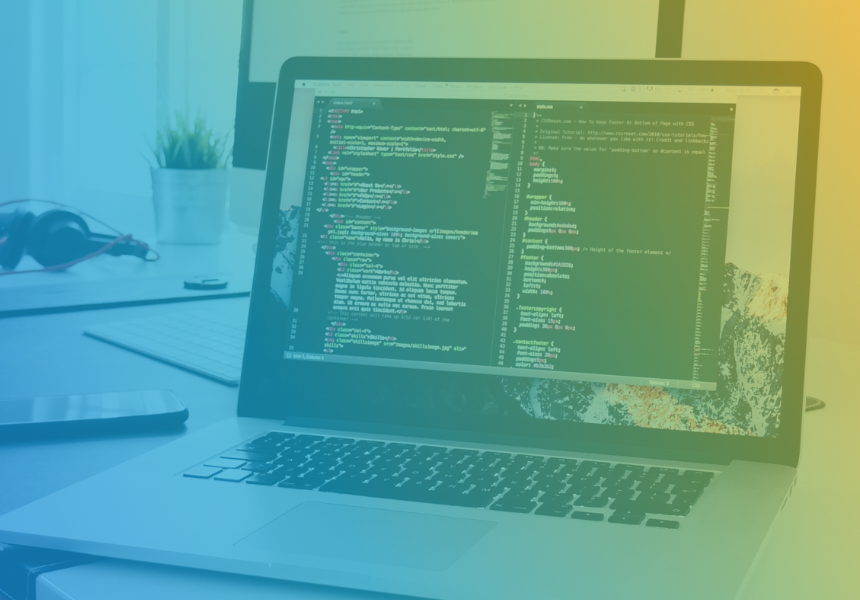The Family Business Crossroads
Every family business eventually faces a turning point. For many family-owned distribution businesses, this is an upgrade of their ERP system.
Old software can’t keep up. Outdated processes slow teams and cause missed opportunities.
Younger leaders often turn to technology to improve and future-proof the business.
But a significant operational change can be intimidating and fraught with unknowns. Senior leaders may hesitate to change what still works in their eyes.
For senior leaders, choosing a new ERP isn’t just about technology. It’s about legacy, stewardship, and the future of the business they’ve created.
Navigating this transition requires balancing respect for established practices and the need to innovate.
Understanding Resistance
Resistance to change is rarely just about the technology. For many senior family members, their business is the result of a lifetime of effort and commitment.
It’s more than a job; it’s a central part of who they are.
When senior family members resist, these concerns frequently shape the conversation:
- Loss of Identity and Control: Change can feel like a threat to their role as stewards of the business.
- Fear of Obsolescence: New systems can make experience and intuition seem less valuable, raising fears about diminished importance. This concern is often unspoken and exists below the surface of resistance.
- Risk Aversion: After seeing the impact of major decisions over time, older leaders tend to be cautious.
- Cognitive Rigidity: Long-held habits make abrupt changes difficult, especially for those who prefer gradual steps.
- Security & Privacy Concerns: In an age where hacks and large-scale data breaches have become the new normal, worries about data breaches and security loom large.
These concerns show up in daily operations, causing senior leaders to stick with what they know best, like manual spreadsheets or old processes. The “if it’s not broke, then don’t fix it” mindset creates silos that the new ERP was meant to solve.
It’s not always about avoiding change. Often, it’s about protecting the values and practices that have shaped the business over time.
Recognizing these issues is essential for a successful ERP upgrade. Addressing them helps maintain trust across generations.
Communicating Across Generations
Empathy and respect are essential when engaging the older generation to get on board with the new project.
Younger family and team members can encourage productive conversations by:
- Listen First: Focus on understanding concerns before suggesting solutions or defending the new technology. This builds trust and reveals underlying fears or misconceptions.
- Frame as a Shared Challenge: Position the ERP upgrade as a common goal that supports business continuity, reduces burdens, and preserves legacy.
- Involve Other Senior Members: Invite experienced team members as co-architects of the transition process. Value their insight instead of viewing them as barriers.
- Translate Benefits: Explain how the new ERP strengthens customer relationships, succession planning, and the company’s legacy.
- Use Respectful Language: Avoid dismissive phrases and technical jargon. Instead, ask questions that highlight the senior generation’s expertise and connect their language to future business needs.
By grounding these tough conversations in empathy and respect, younger team members can create space for open dialogue and shared understanding.
With this strong conversational foundation, the next step is to apply specific strategies and approaches that help senior leaders feel involved and confident throughout the ERP transition.
Strategies and Unique Approaches
Every family business has its own culture and history. The right approach smooths transitions and supports both change and stability.
Here are several practical approaches that can help make this daunting task easier:
- Emphasize continuity. Position the ERP upgrade as the next chapter in the family story, building on tradition rather than replacing it. Frame the ERP as a tool that empowers senior family members’ leadership and decision-making, rather than replacing it.
- Share clear numbers. Present clear cost-benefit analyses on how the new system supports long-term business goals and strengthens their legacy.
- Offer demonstrations. Use sandbox or demo environments to showcase the benefits of a new ERP in a risk-free setting.
- Draw from parallel examples. Share stories of other businesses that made similar transitions while maintaining senior roles and stewardship. Co Connecting with other senior leaders who have been through the process helps create a reassuring environment that shows there’s a “light at the end of the tunnel” and that a new ERP can benefit their business too.
- Acknowledge concerns through an empathetic lens. Acknowledge their concerns directly—don’t just emphasize the system’s “efficiency.” Discuss how it safeguards the business and its legacy.
- Encourage shared learning and training. Host training sessions where all generations learn together, reinforcing collaboration.
- Document knowledge. Use the ERP transition as a chance to document legacy processes, decision-making logic, and business wisdom. This ensures critical knowledge is embedded in the new system for future generations.
- Surface concerns as they arise. Consider whether senior family members have experienced a technological change that went poorly. This approach brings their concerns to light, preventing them from festering like a ticking time bomb.
- Keep talking. Change is a process. Keep communication open and focus on trust-building instead of technical persuasion. Patience is key.
- Expect setbacks. Have clear strategies in place to maintain momentum and support team morale when obstacles occur. Set expectations early so the team is prepared to address challenges calmly and confidently.
While these strategies provide a framework for the project, their success hinges on preserving the family relationships at the center of the business.
Maintaining Family Unity Amid Change
Family businesses succeed when every generation feels heard.
Taking intentional steps can help prevent misunderstandings and maintain strong relationships.
To avoid generational rifts, be mindful of the following:
- Respect both Adaptors and Innovators. Family dynamics usually include both—Adaptors (steady, cautious, protective of the past) and Innovators (bold, future-focused). Respect and leverage each style to find a balanced way forward.
- Balance power dynamics. Make sure all voices are heard, especially those who hold authority or influence.
- Use structured conversations. Family councils or workshops create a safe space that helps with tough talks.
- Celebrate progress as a team. Recognize small wins and key milestones with the entire team or family members. “Gamifying” the transition helps track progress in a fun way that celebrates success.
Even with the best intentions, some conversations can be challenging. Knowing when to pause is just as important as knowing when to push forward.
Knowing When to Pause
Progress takes patience. Sometimes, the best move is to step back from the conversation to protect family relationships and ensure the project’s long-term success.
Recognizing signs of strain is vital. Watch for signs:
- Avoiding or deflecting the topic. If they consistently change the subject, they may need more time and support to process the conversation.
- Emotion overload. If a senior family member starts withdrawing or repeating themselves, it indicates the conversation shifted from discussion to emotional overload.
- Conflict arises. Heated exchanges or personal attacks are signs to pause, reconnect on shared values, and revisit the topic later.
Pausing at these moments isn’t a failure. It helps preserve relationships and paves the way for more construction conversations later.
Building a Bridge to the Future
A new ERP is more than a software change. It’s a commitment to the future of your business and the people who make it possible. The process may not always be easy, but it’s worth it.
With the right strategies, your family can turn this transition into a shared success.
Our team understands the unique needs of family-run distribution companies and is ready to help make your ERP transition as seamless as possible. Conveyance Solutions brings decades of expertise and a deep understanding of family business needs.
ERP MythBusters: Common Fears and Misconceptions
| Myth | Reality |
|---|---|
| “An ERP will erase our way of working.” | A well-chosen ERP builds on proven processes and preserves what works. |
| “Only tech experts can use it.” | Modern ERPs are designed for all users, with training and support available. |
| “We’ll lose control over the business.” | ERPs provide better visibility and empower leadership with real-time insights. |
| “Change means risk.” | Careful planning and involvement of all generations reduces risk and increases success. |
Ready to see the difference a Platinum Partner can make?
Learn more about how we can help make data work better for you.





